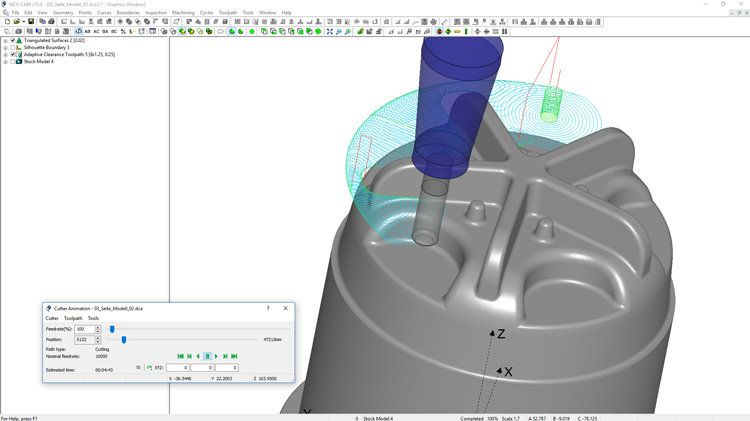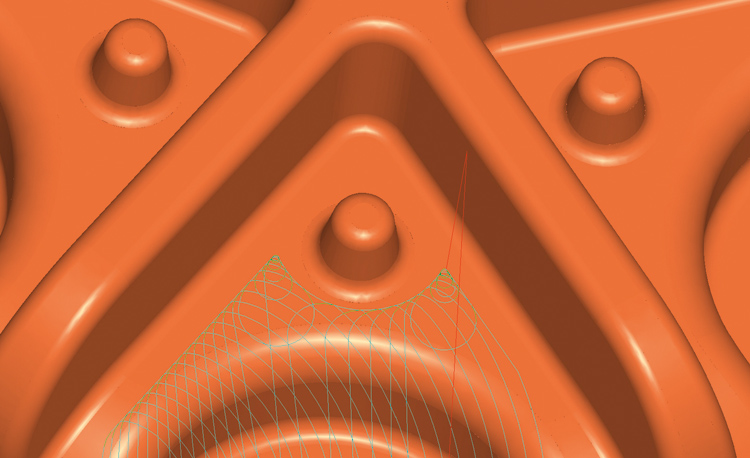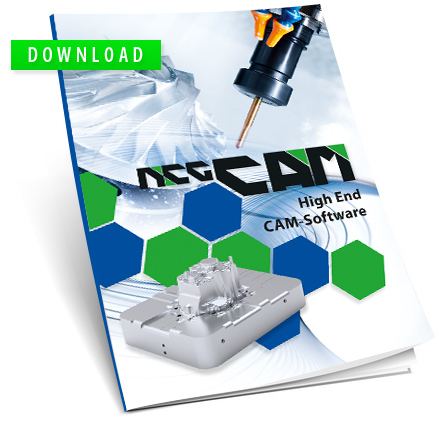Adaptive area clearance eliminates full width cuts using a concept similar to trochoidal milling.
This cutting technique is aimed towards high speed machining with solid carbide cutters. It provides the ability to safely cut using the full length of the flute at the optimum cutting speed for the material and part. Tool wear is spread evenly, cutting more on the flute than the bottom of the cutter, reducing deflection and the potential for vibration by maintaining a constant load on the cutter. The technique is particularly suitable for cutting hard materials and also some electrode manufacturing. The strategy automatically adjusts the toolpath for efficient and safe machining, improving cutting conditions and allowing more consistent and possibly higher machining speeds to be maintained.
As well as significantly improving tooling life, adaptive area clearance can reduce machining time by an average of 25% over conventional roughing as the machine uses the full flute length of the cutting tool, and the machine runs at the optimum speed without exceeding its limits at an isolated point.
The linking order is very important, so the linking is done at the same time as the passes are calculated.
After each level has been cleared using all the flute length, additional passes can be made to reduce the size of the terraces on the 3D form.
These additional passes will be either profile or clearance passes as required, depending on the material remaining or the shape of the part.



